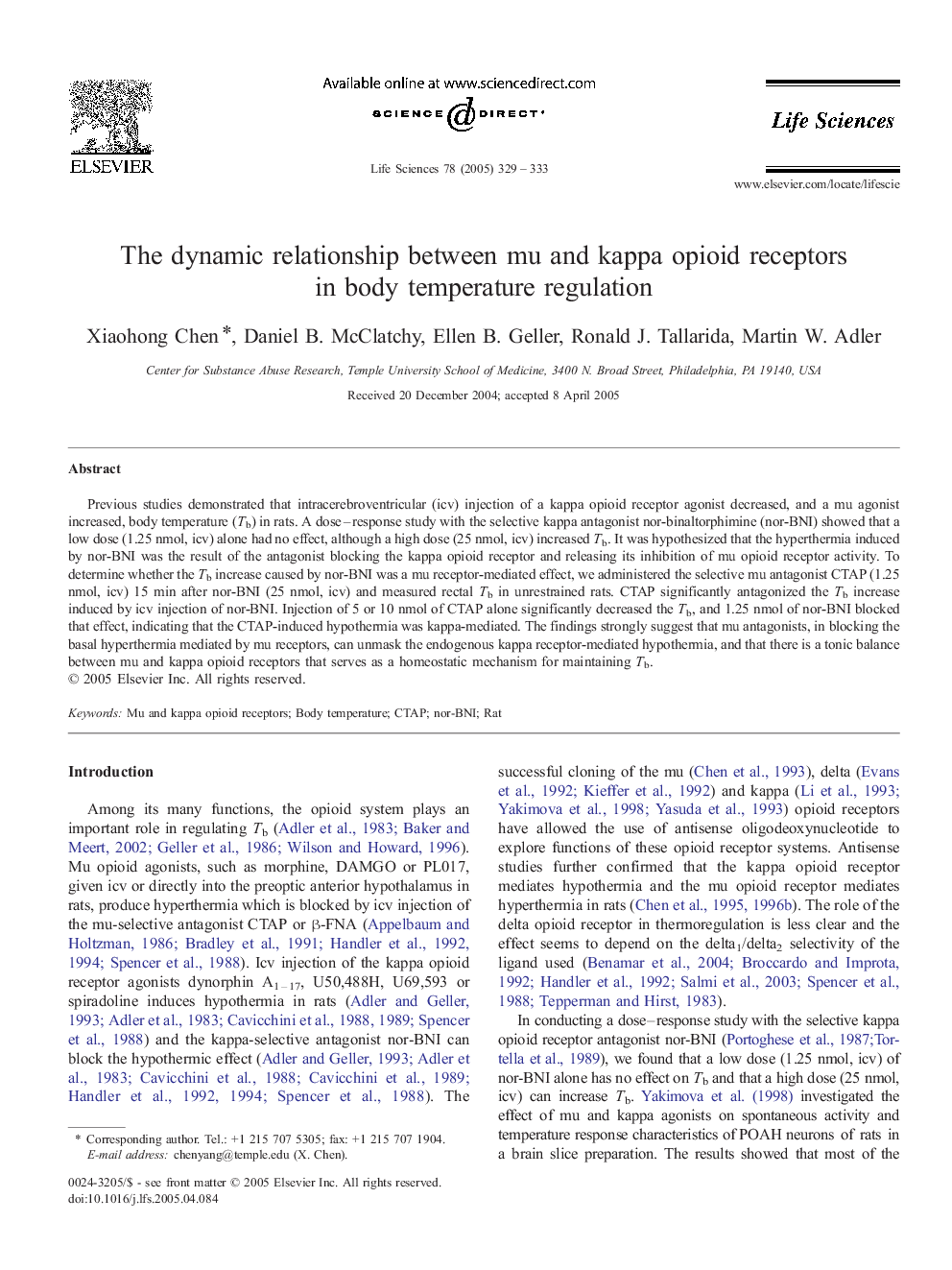| Article ID | Journal | Published Year | Pages | File Type |
|---|---|---|---|---|
| 9012879 | Life Sciences | 2005 | 5 Pages |
Abstract
Previous studies demonstrated that intracerebroventricular (icv) injection of a kappa opioid receptor agonist decreased, and a mu agonist increased, body temperature (Tb) in rats. A dose-response study with the selective kappa antagonist nor-binaltorphimine (nor-BNI) showed that a low dose (1.25 nmol, icv) alone had no effect, although a high dose (25 nmol, icv) increased Tb. It was hypothesized that the hyperthermia induced by nor-BNI was the result of the antagonist blocking the kappa opioid receptor and releasing its inhibition of mu opioid receptor activity. To determine whether the Tb increase caused by nor-BNI was a mu receptor-mediated effect, we administered the selective mu antagonist CTAP (1.25 nmol, icv) 15 min after nor-BNI (25 nmol, icv) and measured rectal Tb in unrestrained rats. CTAP significantly antagonized the Tb increase induced by icv injection of nor-BNI. Injection of 5 or 10 nmol of CTAP alone significantly decreased the Tb, and 1.25 nmol of nor-BNI blocked that effect, indicating that the CTAP-induced hypothermia was kappa-mediated. The findings strongly suggest that mu antagonists, in blocking the basal hyperthermia mediated by mu receptors, can unmask the endogenous kappa receptor-mediated hypothermia, and that there is a tonic balance between mu and kappa opioid receptors that serves as a homeostatic mechanism for maintaining Tb.
Keywords
Related Topics
Health Sciences
Medicine and Dentistry
Cardiology and Cardiovascular Medicine
Authors
Xiaohong Chen, Daniel B. McClatchy, Ellen B. Geller, Ronald J. Tallarida, Martin W. Adler,
